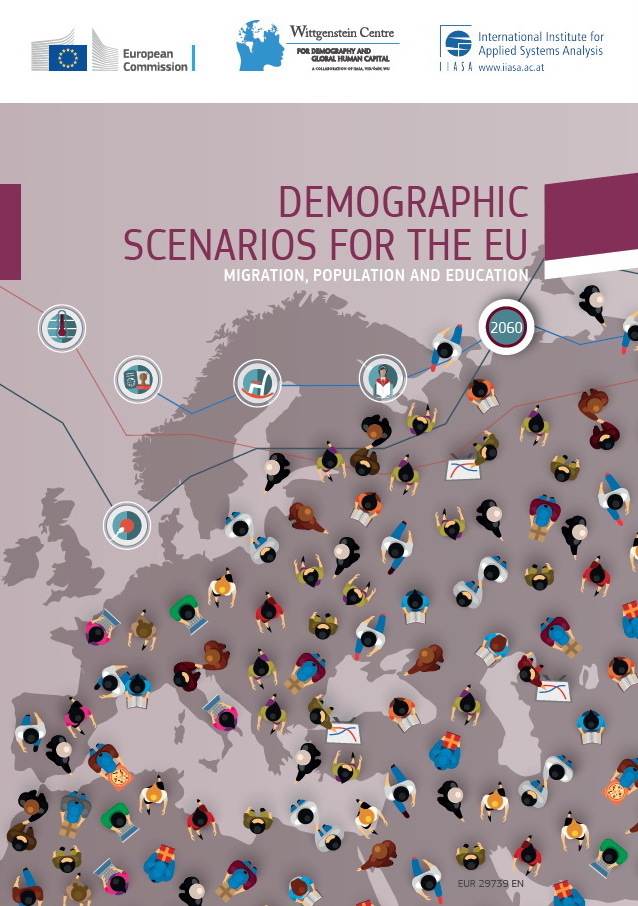 What can we know about the EU’s population and workforce in 2060?
What can we know about the EU’s population and workforce in 2060?
While fortune telling is fraught with risk, demographic trends offer a glimpse into the future in a new report by the Commission’s Joint Research Centre.
Today, the Joint Research Centre and the International Institute for Applied Systems Analysis launch a joint report on the future demographics of the EU.
By looking at factors such as migration, education levels and labour force participation, the report moves beyond traditional demographic analysis to provide a set of scenarios which reveal how these factors can shape the EU’s future population and labour market.
Key findings
- Thanks to advances in medicine and quality of life, Europeans can look forward to longer, healthier and more active lives. The average life expectancy at birth in the EU is now about 81 years – 9 years more than the global average, and it’s expected to grow by two years every decade. This trend also means that by 2060, more than 30% of the EU’s population will be over age 65, compared to 19% today.
- The EU will also boast an even better educated labour force in the future, with as much as 59% of the labour force achieving post-secondary education compared to 35% today.
- Though better educated, the EU’s future labour force will be smaller. This means that European workers will need to support more dependants in the future, putting EU social systems under increased pressure. The report analyses possible scenarios to improve the dependency ratio and thus the sustainability of EU welfare states.
- The picture that emerges is clear: increasing labour force participation, in other words ensuring that a larger part of the working age population is actually in employment, is needed to alleviate the dependency burden. If all EU member states reached the labour force participation rates of the highest performing ones, the dependency ratio in 2060 could remain the same as today. Getting a higher share of the population into work is essential because neither more immigration nor higher fertility in themselves would be enough to meet future challenges.
- To the extent the EU is a destination region for international migration, immigration becomes an influential factor on demographic developments. Migration levels can have a large influence on the total population size and the size of the labour force. At the same time, it cannot substantially slow down ageing and can only improve the dependency ratio to a certain extent. Factors that will influence these trends are the volume of immigrants from third countries, their level of education, their integration into the labour market and society at large.
- Intra-EU mobility is another key shaper of the EU’s future demographics – in particular movement towards the West. Some eastern and southern EU countries have already experienced marked population declines. If the trend continues, some could see their population shrink further by 2060. The emigration of working-age people also leads to accelerated population ageing and the loss of mostly skilled workers, thereby adding to the burden on social security systems.
- Finally, the report looks at the global picture, and finds that global population growth will continue, especially in Africa and Asia. The promotion of education is key to achieve more moderate population growth and development success. Achieving such goals depends, in particular, on giving girls access to education, as education and family planning are closely intertwined. If education expansion continues as it has in recent years, the world population will reach 9.6 billion people in 2060.
Daunting but solvable challenges
The authors of the report highlight that while these changes may seem daunting, they do not pose unsolvable problems to our societies.
Population ageing comes with a healthier, more active population that is able to lead productive, active and enjoyable lives beyond the age of 65.
Increasing labour force participation overall, also of those over 65 and of immigrants from third countries, can stabilise the labour force size and lower the dependency burden.
Furthermore, a more highly educated labour force is more likely to be able to harness the benefits of automation and artificial intelligence, and adapt to a changing world of work.
Strengthening the EU’s already on-going efforts to promote the economic and social cohesion between EU countries can slow emigration from – and facilitate return-migration to – eastern and southern EU countries.
Within this context, it should be observed that recent EU efforts to boost innovation, investments and structural reforms are paying off, with direct effects on employment levels and activity rates being already under way.
Since mid-2014, the EU has created about 13.4 million jobs. With around 241 million women and men in work, employment in the EU has reached record highs in the first quarter of 2019.
The European Commission considers further implementation of the European Pillar of Social Rights crucial to continue improving living and working conditions across the EU and to increase the integration of all parts of society in the labour market.
Download the report: Demographic Scenarios for the EU – Migration, Population and Education
Source: ec.europa.eu
 Government of the Republic of Serbia
Government of the Republic of Serbia















 pdf [271 KB]
pdf [271 KB]
Leave a Comment